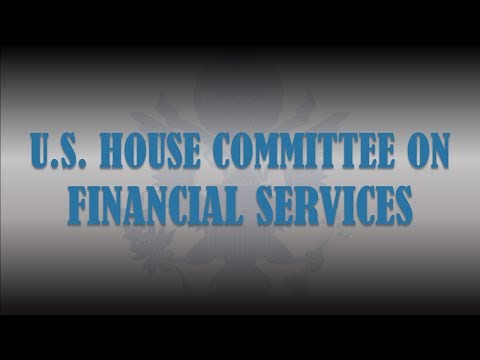Connect with the House Financial Services Committee
Get the latest news: https://financialservices.house.gov/
Follow us on Facebook: https://www.facebook.com/FinancialDems/
Follow us on Twitter: https://twitter.com/FSCDems
Wednesday, March 4, 2020 (10:00 AM) — The Traffickers’ Roadmap: How Bad Actors Exploit Financial Systems to Facilitate the Illicit Trade in People, Animals, Drugs, and Weapons
________
This will be a one-panel hearing with the following witnesses:
• Travis L. Adkins, Lecturer, African & Security Studies, Walsh School of Foreign Service,
Georgetown University
• Dr. Togzhan Kassenova, Senior Fellow, Project on International Security, Commerce,
and Economic Statecraft (PISCES), Center for Policy Research, SUNY-Albany
• Celina B. Realuyo, Adjunct Professor, The George Washington University Elliott School
of International Affairs
• Gretchen Peters, Executive Director, Center on Illicit Network and Organized Crime
(CINTOC) and The Alliance to Counter Crime Online (ACCO)
• Angel Nguyen Swift, Founder and Director, STAT (Stand Together Against Trafficking)
and Advisor, Enigma Technologies
Purpose
Trafficking is the illegal movement, sale, and purchase of goods, many of which are illicit
themselves, and people.1 The scope of trafficking is complex and often involves sophisticated
transnational networks that generate substantial profits and that enable or result in a range of
adverse impacts to American society and our economic and national security. The effects of
trafficking include the violation of human rights, environmental degradation, corruption, sanctions
and tax evasion, political instability, insurgency and terrorism, and death. Among the most commonly trafficked goods are narcotics, wildlife, natural resources (e.g., timber, oil, and gold),
cultural property, weapons, counterfeit consumer items, and humans and their organs.
Despite coordinated efforts to combat these illicit activities, trafficking generates an estimated $1.6 to $2.2 trillion in annual revenue. The International Labour Organization (ILO) notes that forced labor (including sexual exploitation) is one of the most lucrative forms of criminal proceeds, generating more than $150 billion annually Meanwhile, animal and natural resources trafficking is estimated to have annual value as high as $258 billion, growing two to three.
The United Nation’s Office on Drugs and Crime (UNODC) one drug trafficking organization alone – the Sam Gor network, formed from an alliance of five Asia-Pacific-based criminal organizations – is responsible for 40-70% of the region’s wholesale methamphetamine trade to at least a dozen countries, generating annual revenues of $17.7 billion.
While many existing counter-trafficking initiatives focus on a specific type of trafficking, such as
human trafficking, the synthetic opioids trade, or endangered-animal poaching, there are
similarities and often collaborations and convergence among trafficking types, groups, methods,
and actors, particularly in the use of supply chains and the facilitators who make the movement of
goods and proceeds possible. A 2016 UN Environment Programme (UNEP)/INTERPOL report
found that, “criminals now include in their trafficking portfolios waste, chemicals, ozone-depleting
substances, illegally caught seafood, timber and other forest products, as well as conflict minerals
including gold and diamonds.”
Trafficking-in-persons operations can follow the same routes as the illegal drug trade while narcotics and human trafficking operations often share the same supply chains as the illicit tobacco trade. Similarly, research by the U.S. Intelligence Community confirmed that for terrorism and wildlife, WMD, and narcotics trafficking, “the networks are moving everything…we are able to validate quantitatively and qualitatively that [convergence] exists.”
For Hezbollah, which is engaged in “narcotics to international used car sales, and from
money laundering to procurement front companies, U.S. law enforcement now sees multiple
cases where the Hezbollah-affiliated criminal operators are themselves acting as «super-facilitators» for a tremendously wide range of crimes and clients.” As an added layer of
complexity, illicit trafficking organizations (like Amazonian networks engaged in illegal logging, narcotics, and modern slavery) often hide their illicit goods in plain sight, co-mingled and indistinguishable among licit goods.
Hearing Page: https://financialservices.house.gov/calendar/eventsingle.aspx?EventID=406258
03/04/2020 — The Traffickers’ Roadmap: How Bad Actors Exploit Financial… — (EventID=110628)
